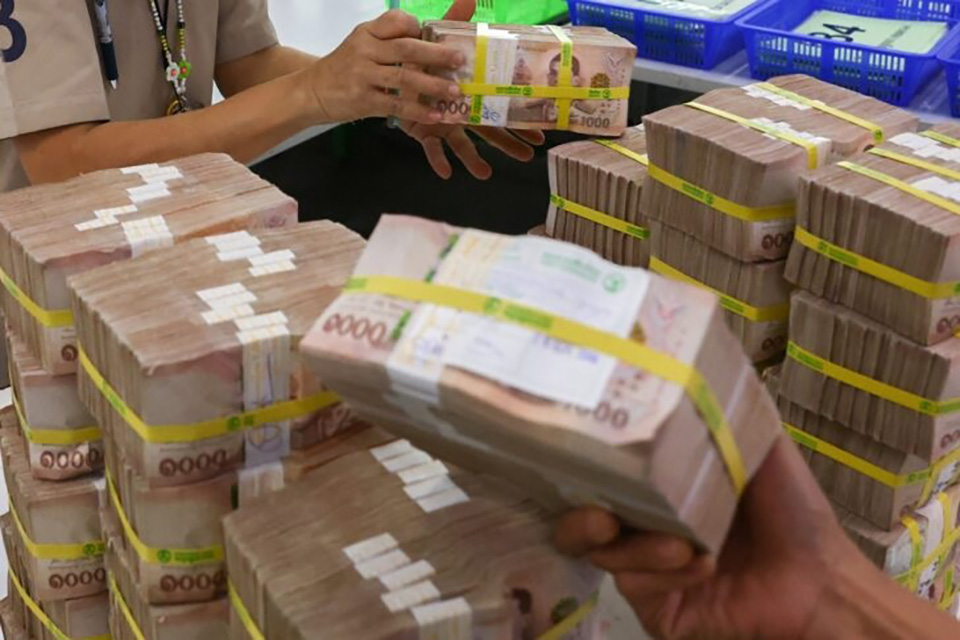
BANGKOK, Thailand – A market strategist at Krungthai GLOBAL MARKETS, Poon Panichpibool, revealed on October 22 that the Thai baht opened this morning at 33.52 per USD, weakening from the previous day’s close of 33.44. The baht has been gradually depreciating since last night, moving within a range of 33.40–33.53. This follows the baht’s significant weakening the day before, breaking through a resistance level of 33.45 per USD.
The depreciation is primarily driven by the strengthening of the US dollar, fueled by market players adjusting their expectations about the Federal Reserve’s interest rate cuts. According to the CME FedWatch Tool, the market now sees only a 38% chance of a rate cut in December, lowering expectations for a cut in November as well.
Moreover, the US dollar has gained support as investors position themselves in anticipation of uncertainty surrounding the US presidential election, where recent assessments suggest that Donald Trump has a chance of winning. Additionally, the yen has weakened against the dollar, surpassing the 150-yen mark, driven by the widening gap between 10-year US and Japanese bond yields.
Beyond the strong US dollar, the baht faces additional pressure from commodity transactions, particularly in gold and crude oil, as prices for these assets fell last night. However, the baht’s depreciation was slowed near the 33.50 resistance level by some dollar selling from exporters and market players holding short THB positions, anticipating further baht weakness.
Looking ahead, there are few major economic reports today, so the market will focus on central bank policy signals, particularly from the Federal Reserve, Bank of England (BOE), and European Central Bank (ECB). Any changes in market sentiment regarding interest rates from these central banks could impact the dollar and major currencies like the pound (GBP) and euro (EUR).
Investors are also watching for corporate earnings reports, monitoring geopolitical tensions in the Middle East, and following the US presidential election developments.
In terms of the baht’s outlook, while it is likely to continue weakening, the drop may be limited as some market participants could sell dollars if the baht moves beyond the 33.50 resistance level. A rebound in gold prices due to election uncertainties or Middle East tensions could also slow the baht’s depreciation. However, the combination of a stronger dollar, rising US 10-year bond yields, and cautious global financial markets could lead foreign investors to continue selling Thai assets, adding further pressure on the baht.
If the baht breaks through the 33.50 level, it could test the next resistance zone at 33.65 per USD. On the support side, the baht may find a floor around 33.30-33.40, with significant support at 33.00 per USD, although a baht rebound is unlikely in the near term.








